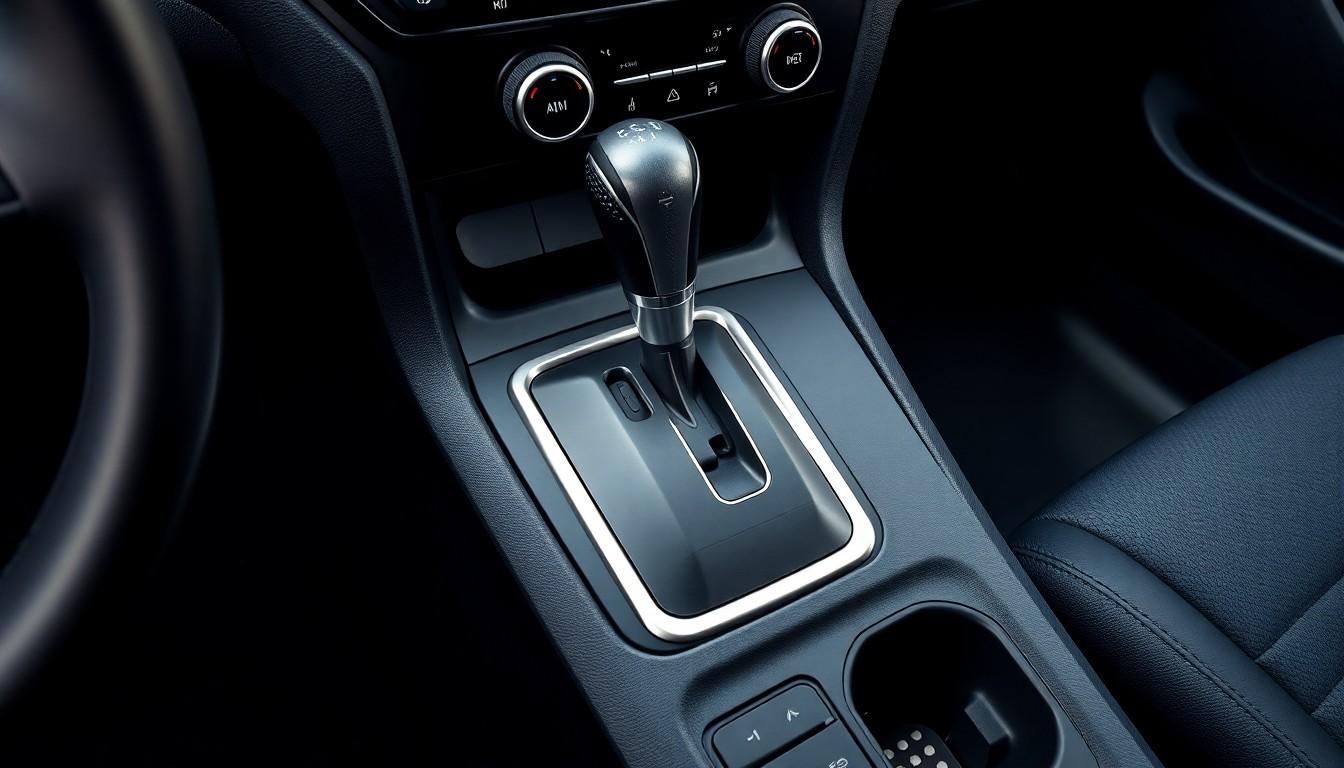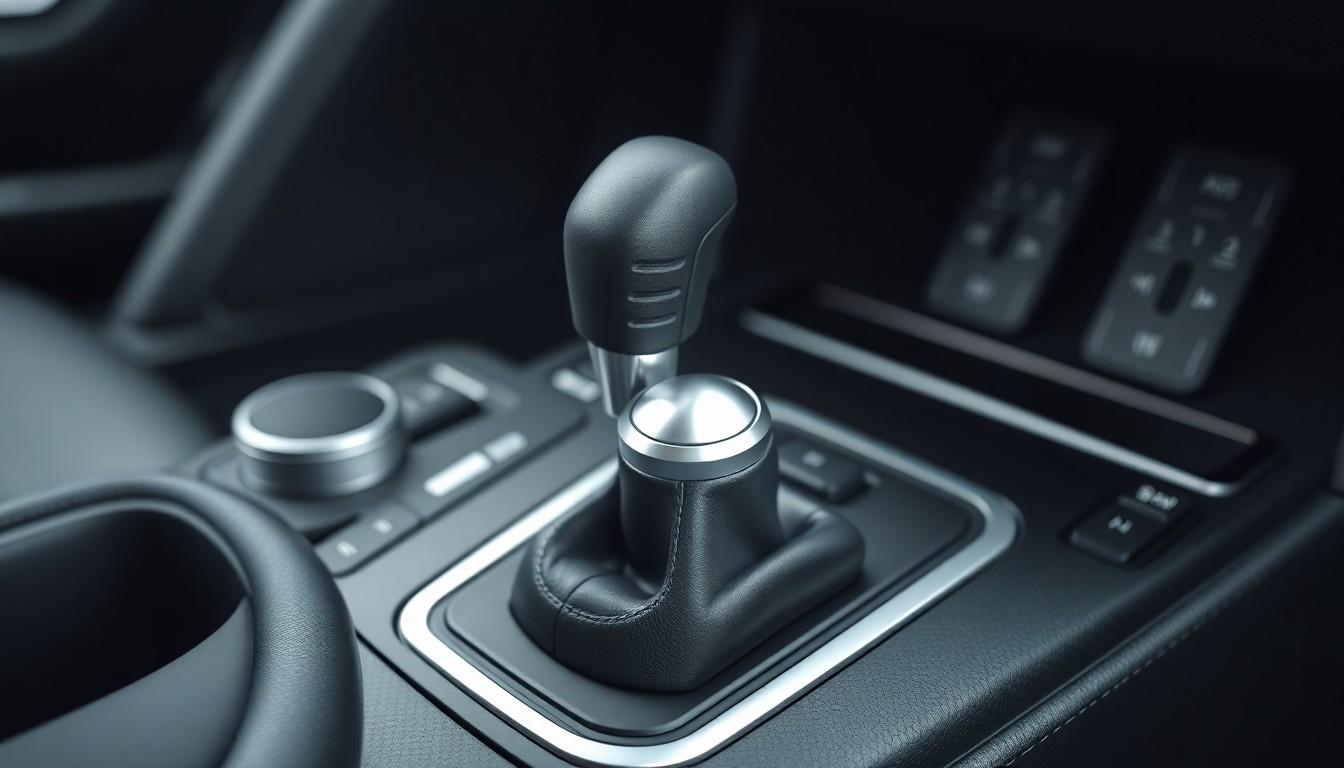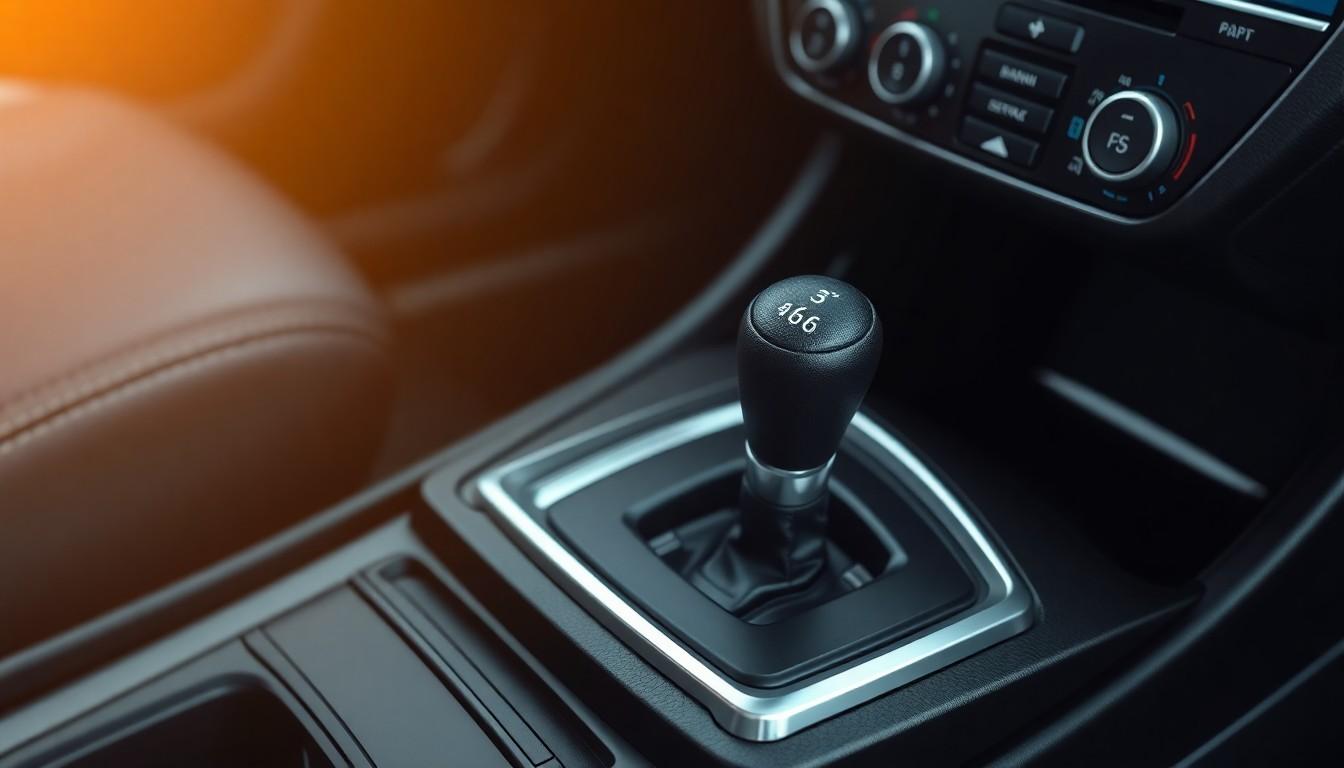Ever wondered why some cars shift smoother than others? The secret lies in their transmission systems. We’ve seen tremendous evolution in manual transmissions over the years, with 5-speed and 6-speed options becoming standard choices for drivers who love control and performance.
When shopping for a vehicle with a manual gearbox, you’ll likely encounter both 5-speed and 6-speed transmissions. While they might seem similar, these systems offer distinct driving experiences, fuel efficiency benefits, and performance characteristics. Understanding these differences can help you make a more well-informed choice about which transmission best suits your driving style and needs.
Understanding Manual Transmissions: The Basics
Manual transmissions operate on a straightforward principle—they transfer power from the engine to the wheels through driver-controlled gear selection. Unlike automatic transmissions, manual gearboxes require drivers to physically shift gears using a gear lever and operate a clutch pedal. The clutch disengages the engine from the transmission when pressed, allowing smooth gear changes without damaging internal components.
The heart of a manual transmission consists of several key components working together. Input shafts connect to the engine via the clutch, while output shafts transfer power to the drivetrain. Gears with different tooth counts or ratios sit between these shafts, creating various gear ratios. Synchronizers enable smooth transitions between gears by matching rotational speeds before engagement.
Gear ratios determine how engine power translates to wheel rotation. Lower gears (1st, 2nd) provide more torque for starting and climbing hills but limit top speed. Higher gears (4th, 5th, 6th) offer less torque but allow greater speed and improved fuel efficiency during highway cruising. This relationship between gear selection and vehicle performance forms the foundation of the manual driving experience.
Most modern manual transmissions feature a synchronized design, eliminating the need for double-clutching when shifting. This synchronization system matches the speed of gears before they engage, preventing grinding and ensuring smoother operation. The driver’s gear selections directly control the power delivery characteristics, creating a more connected driving experience compared to automatic transmissions.
What Is a 5-Speed Manual Transmission?

A 5-speed manual transmission is a gearbox with five forward gears and one reverse gear that gives drivers manual control over their vehicle’s power delivery. This transmission type requires the driver to physically select and engage gears using a clutch pedal and gearshift lever, creating a direct connection between driver inputs and vehicle response.
How a 5-Speed Transmission Works
The operation of a 5-speed manual transmission centers around driver control through the clutch pedal and gearshift. Pressing the clutch pedal disconnects the engine from the transmission, allowing the driver to select a different gear with the shift lever. Once the appropriate gear is selected, releasing the clutch pedal gradually reconnects the engine to the transmission, transferring power to the wheels.
Each gear in the transmission offers a different ratio between engine and wheel speed. Lower gears (1st-3rd) provide more torque for acceleration and climbing hills, while higher gears (4th and 5th) are designed for cruising at speed. The fifth gear functions as an overdrive gear, reducing engine RPM at highway speeds and improving fuel efficiency by allowing the wheels to rotate faster than the engine’s output shaft.
Common Applications of 5-Speed Transmissions
Five-speed manual transmissions appear in many vehicle categories due to their balance of performance, efficiency, and mechanical simplicity. They’re commonly found in compact cars, sedans, and light SUVs from various manufacturers who value their cost-effectiveness and reliability.
Though less prevalent in modern high-performance vehicles that often feature 6+ speed transmissions, 5-speed manuals were standard in many sports cars and performance models throughout the 1980s-2000s. Their straightforward design makes them easier to maintain than more complex transmission systems.
Economy-focused vehicles benefit from 5-speed manuals thanks to their fuel efficiency advantages over older 4-speed manuals and many automatic transmissions. The direct mechanical connection between engine and wheels minimizes power loss, while the overdrive fifth gear reduces fuel consumption during highway driving by keeping engine revolutions lower at cruising speeds.
What Is a 6-Speed Manual Transmission?

A 6-speed manual transmission features six forward gears and one reverse gear that drivers operate by manipulating a gear stick while depressing a clutch pedal. This transmission type offers several advantages including enhanced acceleration, better power distribution across various speeds, quieter highway cruising, reduced engine strain, and improved fuel economy.
The Mechanics Behind 6-Speed Transmissions
The gear arrangement in a 6-speed transmission serves exact performance purposes across different driving scenarios. First through third gears primarily handle acceleration from a standstill, delivering maximum torque when needed most. Fourth through sixth gears function optimally for cruising conditions, with the sixth gear specifically designed as an overdrive gear. During highway driving, this overdrive capability allows the wheels to spin faster than the engine, significantly reducing engine RPM while maintaining vehicle speed. The lower engine speed translates directly to decreased fuel consumption and less wear on engine components during sustained high-speed travel.
Vehicles Typically Equipped With 6-Speed Transmissions
Six-speed manual transmissions first appeared in high-performance vehicles during the early 1990s. Notable early adopters include the 1990 BMW 850i and 1992 Ferrari 456, though the very first production car with a 6-speed manual was actually the 1967 Alfa Romeo 33 Stradale. Today’s automotive industry features 6-speed transmissions across many vehicle categories, from everyday passenger cars to specialized performance models. Manufacturers have embraced this configuration as standard equipment in many modern vehicles due to its optimal balance between performance capabilities and efficiency benefits. The widespread adoption reflects how effectively this transmission configuration meets both driver engagement demands and fuel economy requirements in contemporary automobiles.
Key Differences Between 5-Speed and 6-Speed Transmissions

The fundamental distinction between 5-speed and 6-speed manual transmissions extends beyond simply having an extra gear. These differences affect everything from driving dynamics to fuel economy and are important considerations when choosing a vehicle with a manual gearbox.
Gear Ratio Comparison
5-speed transmissions feature a more straightforward ratio setup with wider spacing between gears. This wider spacing means larger jumps in engine RPM when shifting, potentially creating gaps in power delivery during acceleration. The gear ratios in a 5-speed are typically optimized for a balance of low-end torque and highway efficiency, though with fewer options for fine-tuning engine speed.
6-speed transmissions offer more gradual progression between gears thanks to closer ratio spacing. This additional gear provides drivers with better optimization of engine speed across various driving conditions. With six forward gears, manufacturers can design the lower gears for strong acceleration while using the upper gears for cruising efficiency, creating a more versatile driving experience in different scenarios.
Performance and Efficiency Benefits
6-speed transmissions generally deliver superior performance through more precise control over engine speed. The extra gear allows drivers to keep the engine in its optimal power band more consistently, resulting in quicker acceleration and better responsiveness. This configuration particularly benefits performance-oriented driving where maintaining ideal RPM ranges is crucial.
Fuel efficiency improves significantly with 6-speed transmissions, especially during highway driving. The additional overdrive gear enables the engine to operate at lower RPMs while maintaining cruising speed, reducing fuel consumption and engine wear during long-distance travel. Many 6-speed equipped vehicles can achieve better highway mpg ratings compared to their 5-speed counterparts.
5-speed transmissions, while capable for everyday driving, can’t match the versatility of 6-speeds. At highway speeds, a 5-speed typically runs at higher RPMs due to the lack of an additional overdrive gear, potentially increasing noise levels and decreasing fuel economy. But, 5-speed transmissions often feature simpler designs that contribute to their longstanding reputation for reliability and ease of maintenance.
Driving Experience: 5-Speed vs. 6-Speed

The driving experience differs significantly between 5-speed and 6-speed manual transmissions, affecting everything from shifting dynamics to fuel efficiency. These differences impact how drivers interact with their vehicles and the overall feel behind the wheel.
Shifting Patterns and Techniques
Shifting techniques vary between 5-speed and 6-speed transmissions due to their gear spacing characteristics. A 6-speed transmission features closer gear ratios, often called “close ratio” transmissions, providing drivers more options to keep the engine within its optimal power band. This closer spacing proves particularly beneficial for engines with narrow power bands, allowing for more precise control and smoother transitions between gears. In contrast, 5-speed transmissions typically have wider gear spacing, resulting in fewer options for maintaining the engine’s optimal RPM range during acceleration or deceleration. Even though these differences, the fundamental shifting principles remain consistent across both transmission types, with the basic hand-foot coordination techniques applying to both.
Impact on Everyday Driving
Daily driving experiences show notable differences between these transmission types across several key areas. Acceleration performance in 6-speed transmissions often feels more responsive due to the availability of a lower first gear and tighter spacing between gears, keeping the engine consistently in its power band. Highway driving benefits substantially from a 6-speed transmission’s overdrive gears (fifth and sixth), which reduce engine RPM at cruising speeds, leading to improved fuel efficiency and quieter cabin conditions. Measurements indicate that at highway speeds, the RPM difference between 5-speed and 6-speed transmissions can be less than 300 RPM in some vehicles, though this varies by model and gear ratio design. The additional overdrive gear in 6-speeds makes long-distance driving more comfortable and economical, with reduced engine strain at high speeds. For commuting and city driving, 6-speed transmissions offer more flexibility in gear selection, though in stop-and-go traffic, many drivers might not notice important advantages over a well-designed 5-speed.
The Future of Manual Transmissions

Manual transmissions face declining popularity as automatic transmissions become increasingly sophisticated and efficient. Modern automatic transmissions, including 6-speed and 8-speed variants, now match or exceed the performance and fuel efficiency of their manual counterparts, reducing consumer demand in many markets.
Car manufacturers have shifted their focus toward developing advanced automatic and semi-automatic transmissions. Dual-clutch transmissions (DCTs) and continuously variable transmissions (CVTs) offer superior ease of use alongside improved performance metrics. Even though this industry-wide trend, manual transmissions maintain a dedicated following among driving enthusiasts and remain popular in exact regional markets.
High-performance vehicles continue to feature manual transmissions where driver engagement and precise control are essential elements of the driving experience. This performance segment represents the strongest foothold for manual transmissions, even as mainstream automotive markets embrace automatic options. Enthusiasts value the direct connection to the vehicle that manual shifting provides, ensuring these transmissions won’t disappear entirely from manufacturer lineups.
The technological industry suggests a niche but persistent future for manual transmissions. While their overall market share continues to decrease, manufacturers recognize the importance of catering to passionate drivers who prefer the engagement and control of manually selecting gears. This balance between technological progress and driver preference will likely define how manual transmissions evolve in coming years.
Conclusion
Whether you choose a 5-speed or 6-speed manual transmission depends on your driving priorities. The 5-speed offers simplicity reliability and lower maintenance costs while the 6-speed delivers enhanced performance better fuel economy and smoother highway cruising.
As automotive technology evolves we’re seeing fewer manual transmissions on the market but their appeal remains strong among driving enthusiasts. The direct connection to the vehicle and complete control over gear selection creates an captivating driving experience that automated systems can’t fully replicate.
Understanding the differences between these transmission types helps you make an well-informed choice that aligns with your driving style needs and preferences. Whichever you choose you’ll enjoy the satisfaction that comes with mastering the art of manual shifting.
Frequently Asked Questions
What is the main difference between 5-speed and 6-speed manual transmissions?
The main difference between 5-speed and 6-speed manual transmissions is that 6-speed transmissions have an additional gear that provides closer ratio spacing. This results in better acceleration, smoother power delivery, and improved fuel efficiency, especially during highway driving where the extra gear allows for lower RPMs at cruising speeds.
How does a manual transmission work?
A manual transmission transfers power from the engine to the wheels through driver-controlled gear selection. The driver operates a clutch pedal to disengage the engine power, then uses a gear lever to select the appropriate gear. Components like input and output shafts, gears with different tooth counts, and synchronizers work together to facilitate smooth gear changes.
Which manual transmission is better for fuel efficiency?
6-speed manual transmissions generally offer better fuel efficiency than 5-speed transmissions, especially during highway driving. The additional sixth gear serves as an overdrive gear that allows the engine to run at lower RPMs while maintaining cruising speed, reducing fuel consumption and engine wear during long-distance driving.
Are 5-speed transmissions still common in modern cars?
5-speed transmissions are becoming less common in modern cars as manufacturers increasingly favor 6-speed or higher gear count transmissions. However, they can still be found in some economy-focused vehicles, compact cars, and entry-level models where manufacturing costs and simplicity are prioritized over performance optimization.
What vehicles typically come with 6-speed manual transmissions?
6-speed manual transmissions are typically found in sports cars, performance vehicles, luxury models, and higher-trim versions of mainstream cars. They were first introduced in high-performance vehicles in the early 1990s and have since become standard in vehicles where driving engagement and optimized performance are important selling points.
Does a 6-speed transmission improve acceleration?
Yes, a 6-speed transmission generally improves acceleration compared to a 5-speed. The closer gear ratios allow drivers to keep the engine in its optimal power band during acceleration, minimizing power drops between shifts. This is especially beneficial for engines with narrow power bands, resulting in smoother and more responsive acceleration.
Are manual transmissions becoming obsolete?
Manual transmissions are declining in popularity as automatic transmissions become more sophisticated and efficient. Manufacturers are increasingly focusing on advanced automatic and semi-automatic options like dual-clutch transmissions. However, manuals still maintain a dedicated following among driving enthusiasts and continue to be featured in performance vehicles where driver engagement is valued.
Which is easier to maintain, a 5-speed or 6-speed transmission?
5-speed transmissions are generally easier to maintain due to their simpler design with fewer components. They typically have lower repair costs and are known for their long-term reliability. While 6-speed transmissions offer performance advantages, their more complex design with additional gears and components may require more specialized maintenance and potentially higher repair costs.

